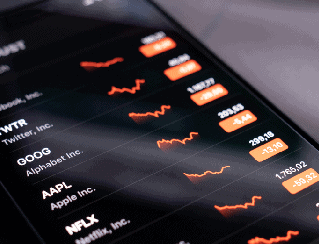Whether you are learning to trade forex for the first time or you have already spent years honing your FX strategy, spreads are something you need to know about. These important data points give you insight into how much your positions will cost, as well as offering other indications of market conditions.
But this is only a very basic overview. So what is a forex spread exactly, and what does this mean for traders? How do you read and analyse the FX spread data you encounter? Here’s what you need to know.
Understanding forex spreads
What are spreads in forex trading? A spread in forex relates to a currency pair or currency correlation and is a representation of the difference between the buying and selling prices for this particular pair on the FX market. The buying price is sometimes known as the bid price, while the selling price is known as the ask price. Spreads are not unique to forex, and traders in other financial markets — including the equities market — will need to be aware of the spread value and what it means.
To calculate the FX or money spread, you need to subtract the price to sell the currency pair (the ask price) from the price to buy the currency pair (the bid price).
Let’s look at the USD/AUD currency pair as an example. If the bid price is 1.46268 and the ask price is 1.46262, the difference between the two is 0.00006. This is the spread.
Remember that the spread will be represented in the form of pips — for the USD/AUD pair, a pip is a movement at the fourth decimal place. This means the spread would be 0.6 pips.
Forex spreads and trading costs
The forex spread value serves an important function — it tells traders how much they will need to pay when they open a position on the FX market. This is why it’s important to understand how to calculate the spread cost in forex.
To make this calculation, you will need to know the size of the position you plan to open and the spread value in pips.
So, in the above example, the spread was 0.6 pips or $0.00006.
Let’s say you are trading a standard lot of the currency in question — this is 100,000 units.
0.00006 x 100,000 = 6
The cost to the trader is $6.
The greater the spread, the greater the cost to the trader when they open a position in the market. This is why traders generally look for narrower, lower-cost spreads before they decide to open positions.
Spreads and leverage
Using leverage in forex is a popular technique for traders who want to increase their exposure to market forces. Generally, traders only have enough available capital to open small positions in the market — positions with relatively low levels of exposure. This means their potential returns — and their potential losses — are limited. You will either have to achieve success in a large number of trades to make a significant return or keep your position open for a very long period of time. Neither strategy guarantees that the trader will make money.
To enhance and augment exposure to risk and volatility, traders often turn to leverage. When you use leverage, you are borrowing capital with which to open your position. So, if you leverage a position at a ratio of 20:1, you are borrowing $20 for every $1 from your own trading account balance. This increases the potential benefits of a forex trade, but also increases the risk to the trader themselves. Basically, in the above example, potential returns are multiplied by 20 — but remember, you’ll also need to pay this leveraged money back after the transaction, so tread carefully.
Unfortunately, the spread will also be magnified when you choose to leverage a position, along with the trading costs. In the above example, you’ll pay 20x more to open your position than you would without leverage. Again, this is a reason to approach leverage with a careful and research-backed approach.
Spreads and margin calls
In some cases, a change in the spread may result in a margin call. Movements and changes to the spread volume are common and can be caused by changes in volatility or liquidity, as well as a range of global economic and geopolitical factors. However, significant movements can also cause problems and may result in the position being closed and liquidated.
Margin calls occur when traders are no longer able to service their open positions.
This can happen for a number of reasons — leverage and excessive losses are behind most margin calls, as traders can quickly find themselves out of their depth on a position if the market moves in an unexpected direction. FX spread changes can also trigger these calls if the cost of keeping the position open exceeds the available funds in the account. You may add funds to your account to keep the position open, or you may decide that the spread has become too unfavourable to continue, and instead accept the liquidation.
Grow your understanding of spreads and start forex trading at VT Markets
Here at VT Markets, we are proud to offer one of the leading forex platforms on the market. We have a range of tools to help beginner traders and more experienced FX veterans alike as they open positions and make trades. Use our demo account to build your confidence and to discover more about important trading aspects like spreads. Even if you have traded on other platforms before, it’s worth using this demo account to become familiar with how VT Markets works. Next, you can start trading for real with a live trading account. Want to learn more about our platform or forex spreads? Get in touch with our team today.
FAQs
Do spreads matter in forex?
Yes, spreads do matter in FX, and anyone who learns to trade forex needs to know about spreads. The greater the spread, the greater the cost that traders will incur when they open a position on a certain currency pair. Traders will have to pay particular attention to the spreads on currency pairs they want to trade and will need to factor this into their strategy.
Are forex spreads the same as pips?
FX spreads are not the same as pips. Pips in forex are incremental measurements that help traders to understand which way the market is moving — representing a movement at the fourth decimal place of the currency value in most cases, or the second decimal place for currencies of smaller denominations.
But pips and spreads are linked. This is because pips are used to measure the size of the spread. The buying and selling prices of the two currencies in a pair will be measured in pips, and the difference between these values will tell you the spread.
Why are forex spreads so high?
Forex spreads vary greatly, and there are a number of factors that can cause them to widen beyond ordinary or expected levels.
Periods of low liquidity result in higher spreads — when exchanges close at the end of the trading week, spreads will become wider.
High volatility in the market will also result in high spreads, as trading platforms and brokers seek to mitigate some of the risk that comes from this sort of trading environment.
Spreads may increase ahead of a major economic or geopolitical news event that will impact exchange rates in forex. The spread will respond to market uncertainty.
High forex spreads may also be caused by a significant market shock, such as a financial crash somewhere in the world.
What does a high spread mean in forex?
A high spread means that there is a significant difference between the buying and selling values of a currency pair. If trades are made when spreads are high, the cost to the trader is greater — this is why traders generally look for lower spreads when they approach currency pair positions.
A high spread may also provide an indication of the condition of the market. Higher spreads often indicate that volatility is high and liquidity is low for a particular currency pair.
What is a good spread in forex?
It’s difficult to identify exactly what is a good forex trading spread, simply because different trading strategies have different requirements. Scalper trading, for example, may benefit from periods of high volatility and the rapid price movements that result from this. Generally speaking, though, traders want spreads to be as low as possible, indicating low volatility and high levels of liquidity. This is because the transaction cost will be lower.
Spreads vary across different currency pairs and through different market conditions. The average spread for the USD/CAD currency pair, for example, will be around 2.0, while the average for the EUR/JPY currency pair will be around 1.8. Anything below this level can be considered a good spread. Analysing the market via your trading platform will help you to understand more about good and bad spreads for specific markets.



































